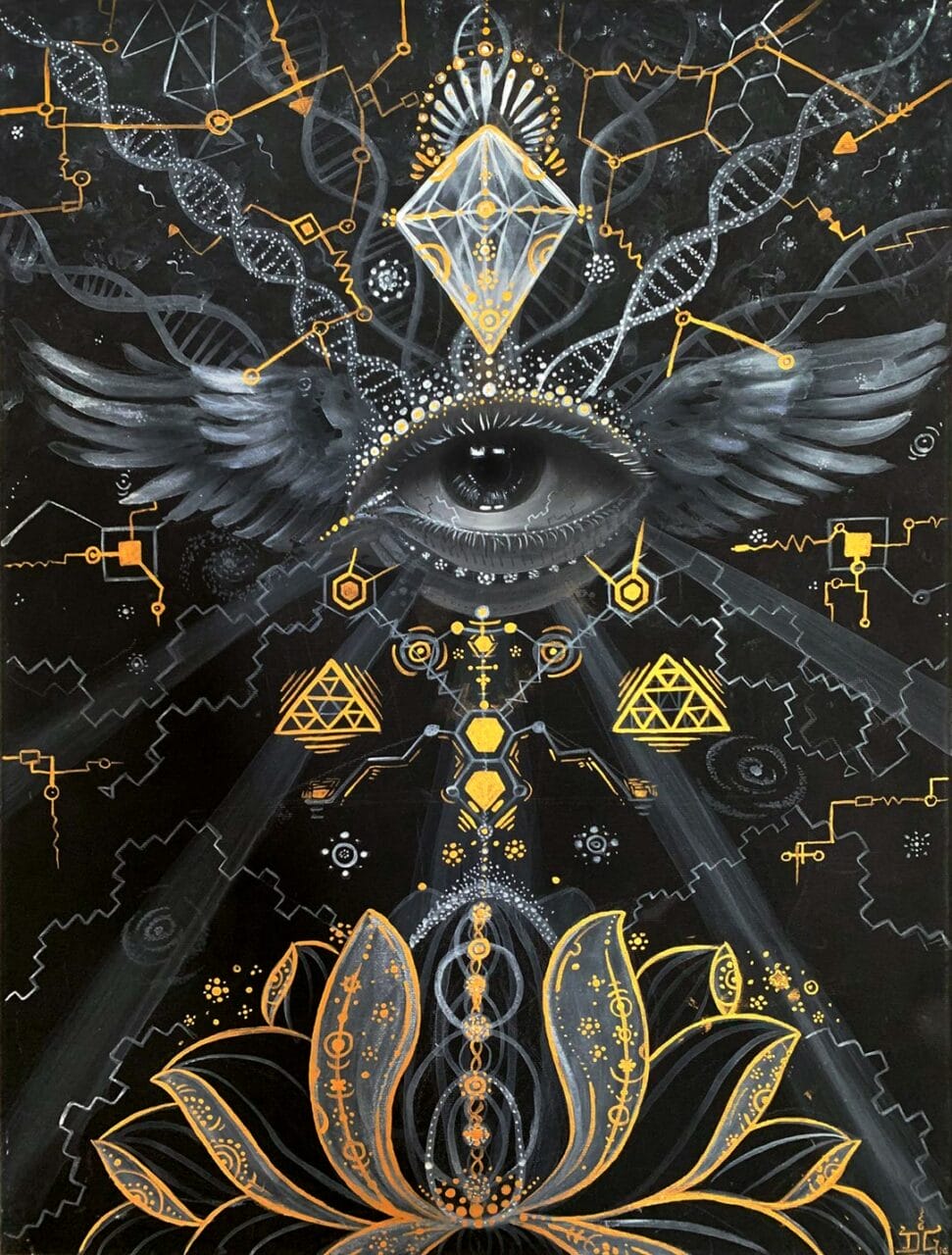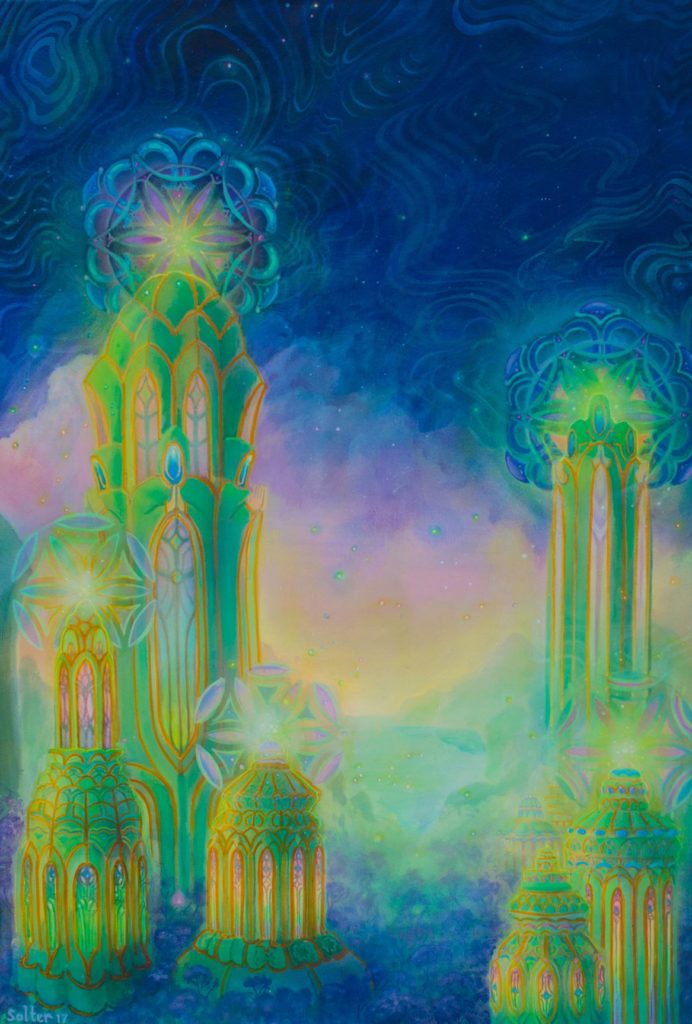
© Uni Kaya
Historical Account of Psychedelic Products
Records indicate that Psychedelic Products has been in existence since 9000 BC. These distinctive fungi, composed of more than 200 species, contain psilocybin – a compound known to produce hallucinogenic effects. These effects can range from altered perception and visual and auditory hallucinations to profound spiritual experiences. Over thousands of years, these mushrooms have been incorporated into spiritual ceremonies, rituals, and practices of various cultures and tribes. Many of these historical uses are traced back to North and South America.
Psychedelic Products in Ancient Periods
Over the centuries, many cultures have utilized natural psychedelics. As evidenced by discoveries in the Sahara Desert, humans were consuming Psilocybe Cubensis more than 7000 years ago. Archaeological findings have revealed the depiction of this psychoactive substance in prehistoric art across numerous regions. For instance, indigenous tribes from the Sahara in North Africa illustrated its use in their paintings dating back to around 9000 BC. Similarly, the renowned Selva Pascuala mural rock painting in Spain, roughly 6000 years old, indicates the use of Psilocybe Hispanica in religious rituals. The influence of these substances on our cultural evolution, religion, art, societal norms, and everyday life is becoming more apparent. This substance has undeniably made a lasting mark on our culture and society.
Historical Overview of Psychedelic Products Usage
Historically,Psychedelic Products have had a long history of usage. The psychoactive substance that is known today has traversed many centuries, with varying practices surrounding its use. Who wouldn’t appreciate the offerings of nature? It’s about time for Psychedelic Canada to trace the historical path that led Psychedelic Products to its current status.
Main Takeaways
- Dried Psychedelic Products have been part of traditional rituals and spiritual healing for centuries. Today, it is utilized as a treatment for mental health disorders.
- Psychedelic Products became a hallmark of the hippie culture and played a vital role in the psychedelic revolution, encouraging its recreational use.
- Prominent figures like Wasson, Sabina, and McKenna were instrumental in introducing psilocybin to the contemporary world.

© Jonathan Solter
Backing the Stoned Ape Theory
The Stoned Ape Hypothesis was proposed by Terence McKenna, suggesting that human evolution, especially mental development, might be influenced by psilocybin. Despite facing some criticism, the intriguing nature of this theory is undeniable.
Ancient Cultures and Sacred Ceremonies
Ancient societies depicted cubes through symbols, art, and sculptures, indicating the ceremonial usage of Psychedelic Products. The Mayans and Aztecs used it for interacting with otherworldly beings, including gods. Within the culturally rich Aztec society, it was termed “teonanácatl“, which means “flesh of the gods”. The concept of a psychedelic experience was alien to them, which made them perceive it as a divine entity. Moving north to Siberia, hallucinogenic Psychedelic Products were employed by Siberian shamans. They specifically used the hallucinogen (Psychedelic Products), known as “Amanita Muscaria” for spiritual healing and traditional rituals, despite its poisonous nature. This practice dates back almost ten thousand years. In African tribal rituals, especially among the Congolese and Zimbabwean tribes, cubes were employed for communicating with ancestors, inducing visions, and promoting spiritual healing. These historical societies play a crucial role in understanding the current usage of psilocybin. The reverence for this substance in these cultures originated from its divine connotations and its ability to trigger mystical experiences.
Psychedelic Products in Legends and Folklore
Numerous accounts, including those by Gordon Wasson, have highlighted the connection between Psychedelic Products and the spiritual world, emphasizing its role in folklore and mythology as a medium for divine interaction and illumination. In ancient India, the Soma—a ceremonial beverage mentioned in the Vedas—was thought to provoke altered states of consciousness. Scholars like Wasson propose that it might have been brewed from psychoactive plants, specifically fly agaric. Some even suggest that this ancient drink might have contained a mix of different plants. Regardless of its origins, the psychedelic history suggests that Soma facilitated the appearance of sacred symbols during ceremonies, representing a portal to higher wisdom or spiritual enlightenment.
The Current Age
A Brief Overview of the
Genesis
Historical documents from the era before Columbus indicate that both the Mayans and Aztecs utilized psilocybin Psychedelic Products. Despite Spanish authorities in the 15th and 16th centuries labeling its use as uncultured and proceeding to ban it, the substance persisted. Defying the ban, shamans continued to consume magic Psychedelic Products in secret, thereby maintaining their cultural practices for over four centuries.
The Reemergence in the Western World
The 1950s witnessed the revival of these substances in the Western world, a development largely attributed to the groundbreaking work of individuals like R. Gordon Wasson, Roger Heim, and Albert Hofmann. In a Mexican expedition, they successfully isolated the two psychedelic compounds (psilocybin and psilocin) contained in the Psychedelic Products obtained from the Mazatec tribe. Wasson later shared his experiences, uses, and understandings of magic Psychedelic Products in Life magazine. His articles and personal narratives paved the way for the substance to gain recognition as a potent hallucinogen. By the 1960s, the substance had become emblematic of the Hippie movement and was considered a means to profound spiritual experiences. Its use, however, also sparked considerable debate and led to a shift in the recreational use of hallucinogens.
Further Evolution: Worldwide Ban
In 1971, psilocybin was classified as a Schedule 1 illegal drug under the United Nations Convention on Psychotropic Substances, alongside Lysergic Acid Diethylamide and N, N-Dimethyltryptamine. All of these substances were believed to lack medicinal value and carry a high risk of abuse. This decision resulted in widespread criminalization in Western nations, including Canada and the U.S., significantly limiting the spiritual and therapeutic uses of the substance.
The Modern Resurgence of Psilocybin
In the present day, there has been an easing of the strict laws regulating the use of psilocybin, beginning with its decriminalization. This shift is in line with the UN’s provision for treaty member states to oversee the substance as per their own judgment. Simultaneously, a rising tide of research and clinical trials related to psychedelics and consciousness has lent strong support to possible medicinal uses of psilocybin. A 2021 study investigating the therapeutic potential of psychedelics suggests that the 1970 ban considerably hindered further research. However, a preliminary study in 2004 renewed interest in psilocybin, suggesting potential uses in neuropsychiatry, especially for managing mental health conditions such as:
- Depression, Anxiety, and Stress
- Post-traumatic Stress Disorder (PTSD)
- Obsessive-compulsive Disorder (OCD)
- Substance Abuse (Aiding in Addiction Recovery)
- Excessive Alcohol Consumption and Drugs)
The Influence of Media and Art
The topic of psychedelic cubes has grown so popular that they’re now represented across various media formats. The renewed interest in these substances is largely due to their portrayal in diverse forms of media, art, and literature. Movies such as “Fantastic Fungi” by Director Louie Schwartzberg, and documentaries that delve into their therapeutic benefits, have enhanced public understanding of their mental and physical effects. Michael Pollan, the author of “How to Change Your Mind,” has investigated the use of psychedelics for mental health and spiritual development, thereby sparking renewed interest in their societal and therapeutic relevance.
Prominent Historical Advocates of Fungi
- María Sabina: Sabina, a Mazatec shaman and poet from Mexico, played a significant role in introducing cubes to the Western world. She permitted Wasson to observe her Psychedelic Products rituals.
- Gordon Wasson: Wasson, a writer, gained recognition for bringing international attention to the drug. His comprehensive account of his encounters with Sabina led to an enriched comprehension of its regional usage.
- Terence McKenna: A leading proponent of psychedelics, McKenna was instrumental in emphasizing their cultural and philosophical relevance. Through his speeches, writings, and research, McKenna popularized the “Stoned Ape” theory, positioning it as a cognitive enhancement tool that shaped society.
The Timeline – A Concise Overview
with TRD.
| Prehistoric | Stone art discovered in the Sahara, Africa, depicts prehistoric usage |
| Ancient | The Maya and Aztec civilizations incorporated teonanácatl into their religious and spiritual rituals. |
| 16th Century | Usage declined due to its association with Indigenous beliefs |
| 18th Century | The drug’s “intoxicating” effects became apparent in 1799 when four children inadvertently consumed Psilocybe Semilanceata, highlighting the potential negative effects of its usage. |
| 20th Century | Wasson and Sabina introduced the drug to the Western world, sparking the psychedelic revolution among the hippies. The UN legalized the possession and use of the substance. |
| 21st Century | Current clinical studies are undertaking to validate its medical potential increasing. The Special Access Program by Health Canada has authorized its usage. |
The Emergence of the Psychedelic Era and Beyond Salvation | Purchase Psychedelic Products Online at Psychedelic Canada
The consistent use of cubes at Psychedelic Canada, supported by robust scientific research, will persistently expand until global acceptance is achieved. The online Psychedelic Products store at Psychedelic Canada is primed to facilitate this evolution. Our extensive range of products captivates customers, encouraging them to delve into the enigmatic and therapeutic journey of psilocybin. Secure your preferred items from Zoomies today.
Commonly Asked Questions
No, Amanita Muscaria does not contain the active ingredients present in Psilocybe Cubensis. Instead, the psychoactive compounds in fly agaric are muscimol and ibotenic acid. One prevalent hypothesis regarding Soma’s origin postulates it to be a mixture of different psychoactive plants. Likewise, ayahuasca is a mind-altering concoction. However, the sole link between the two is the view of soma as an analogue of ayahuasca. It was scrutinized for potential Psychedelic Products poisoning after being classified as a toxic Psychedelic Products. Today, it is recognized as the Psilocybe Mexicana.

